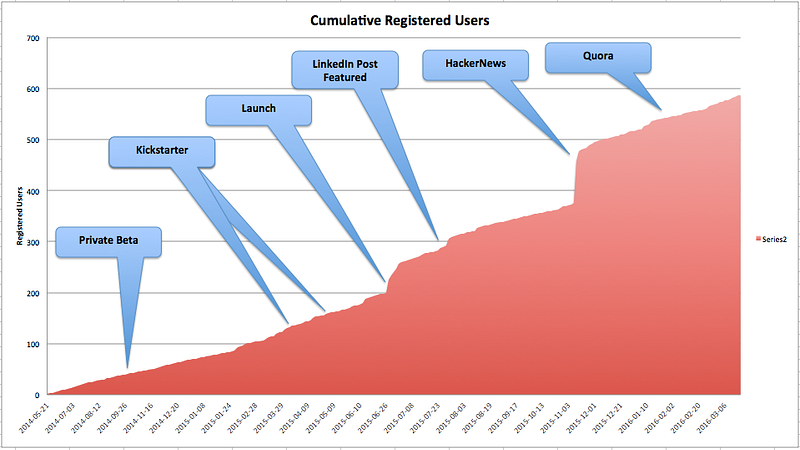AKA “events”, AKA “local discovery”, aka “help me find things to do in my free time”.
TL/DR. Just Don’t. Please, I’m begging you.
As one of the founders (and CEO) of goby, a local “recommendation engine for things to do”, I get approached fairly frequently (seems like every few weeks) by entrepreneurs who want to work on this problem. In the interests of saving both of us time, I decided to write down the high level reasons why this is a really bad idea. Read this first, then we can chat if you still want to try.
Before we get started, a few caveats. This advice assumes you’re trying to doa venture-backed unicorn, need to raise money to pay your salary, and hence need to scale. If you’re doing a bootstrapped personal project where you make a few bucks, much of this may not apply. Second, I don’t really even want to hear about your product. Even if your product is amazing, it doesn’t matter. You won’t make it. The problem in this market isn’t the product, it’s the market.
The challenge here is not to make a great product, it’s to get scale of users. If you’re doing a venture-backed startup, you need MILLIONS of users for this to work. Here’s why you won’t get them:
- It’s not a daily use case
- Most people don’t actually have free time
- You need to scale geographically as well as topically
- It’s hard to get good data
- Competition (I have a Graveyard of ~200 companies who’ve tried).
- No clear path to monetization
If you’re unconvinced, you can read a bit more detail below about these various factors. But trust me, I’m right.
Is this a real problem for people? Yes. Are experiences valuable? Yes. Is this problem worth solving? Yes. It just won’t be a startup.
In a previous generation, this problem was solved by Newspapers. They had a “metro” section that highlighted cool things going on. They already had an audience, they had local knowledge, they just delivered some extra value. The future version of this problem will be solved by a brand that already has an audience. Maybe a platform like Facebook (already the biggest events database on the planet), or a Yahoo/AOL/some other portal, or by a brand working in a bigger associated space (Foursquare? Twitter? AirBnB? Uber?).
OK, so you’re unconvinced. Keep reading.
It’s not a daily use case.
I’ve written about this at length elsewhere, but because of the way people discover, test, and re-use new apps, unless you have a near-daily use case, people just forget about you before they need you. A similar take from Ben Yoskowitz.
Most People don’t actually have free time
Who is your demographic for this? Young urban singles have free time, they like to go out at night. Married people with kids — their weekends are spoken for. Mow the grass. Go to the soccer game. Run errands. Get up Monday morning. It’s tempting to think there’s millions of people sitting around bored, because it happens to all of us at some point. But most of the time, most of the people don’t have this problem. It happens once a month if you’re lucky. And then, many people will just decide to stay in and watch Game of Thrones.
You need to scale geographically as well as topically.
In order to get millions of users, you can’t just do one city. Not enough audience. So, that means you need data for New York, Boston, LA, Raleigh-Durham, Atlanta, Moab, …. and you need to cover different topics for different demographics (nightclubs vs family-friendly events)…unless you have some serious tech (we had semantic web crawling from MIT @ goby and still struggled), you won’t be able to get this data easily. Which leads to:
It’s hard to get good data.
Unfortunately the data is distributed — Facebook events, Wine tastings on location restaurant websites, concerts on Ticketmaster,….it’s all really spread around. There’s no centralized place to get it. Not only do you have to cover lots of geographies, you have to cover lots of topics. Jazz, Hiking Trails, beaches, Comedy, Family Friendly book readings, the list goes on and on and on. If all you do is aggregate some events from Ticketmaster, nobody needs you — they already have Ticketmaster! Which leads to….
Competition
You started work on this because you think it’s a problem nobody’s working on or solved. Guess what: I keep a list. I call it The Graveyard. There’s HUNDREDS of startups who’ve tried and failed to solve this problem. Some really great services: goby, Sosh, SCVNGR, Diddit, Hotlist, Banjo, Sonar, Whrrl, Spindle, Schemer by Google, Eventful, Zvents, Upcoming (now returning, believe it or not!!). This runs everything from one person in his/her basement to apps from biggies like Google. Nobody lasts more than a few years. When that happens, it means something’s wrong with the market, not the companies. Can you explain why you’ll succeed when all these other good folks failed?
Now, in some specific big areas there’s players: Ticketmaster for music, EventBrite for professional events, and some others. But they are the exception, and worse, if your app is great at music, then you have to swim upstream against a brand like Ticketmaster.
(and, you’d better have a web site, an IOS app, an Android App, and soon, a chat bot interface 🙂
Monetization
Finally, it’s very unclear how to monetize this space. Ads? Forget it. Until you have 2 or 3 million monthly uniques, you’re not getting anywhere with ads. Affiliate revenue? Most of the things that are purchasable are being sold by the Ticketmasters of the world — and people would rather buy from them than you.
A lot of big problems you have to solve.
Here’s some required reading of some post mortems and other folks’ thoughts on this:
(Plancast) http://techcrunch.com/2012/01/22/post-mortem-for-plancast/
(Sonar) https://medium.com/@brett1211/postmortem-of-a-venture-backed-startup-72c6f8bec7df#.um9es7s7z
(RiotVine) https://riotvine.wordpress.com/2010/08/09/post-mortem/
(HugeCity) http://www.hughmalkin.com/blogwriter/2015/9/23/why-no-one-has-solved-event-discovery






